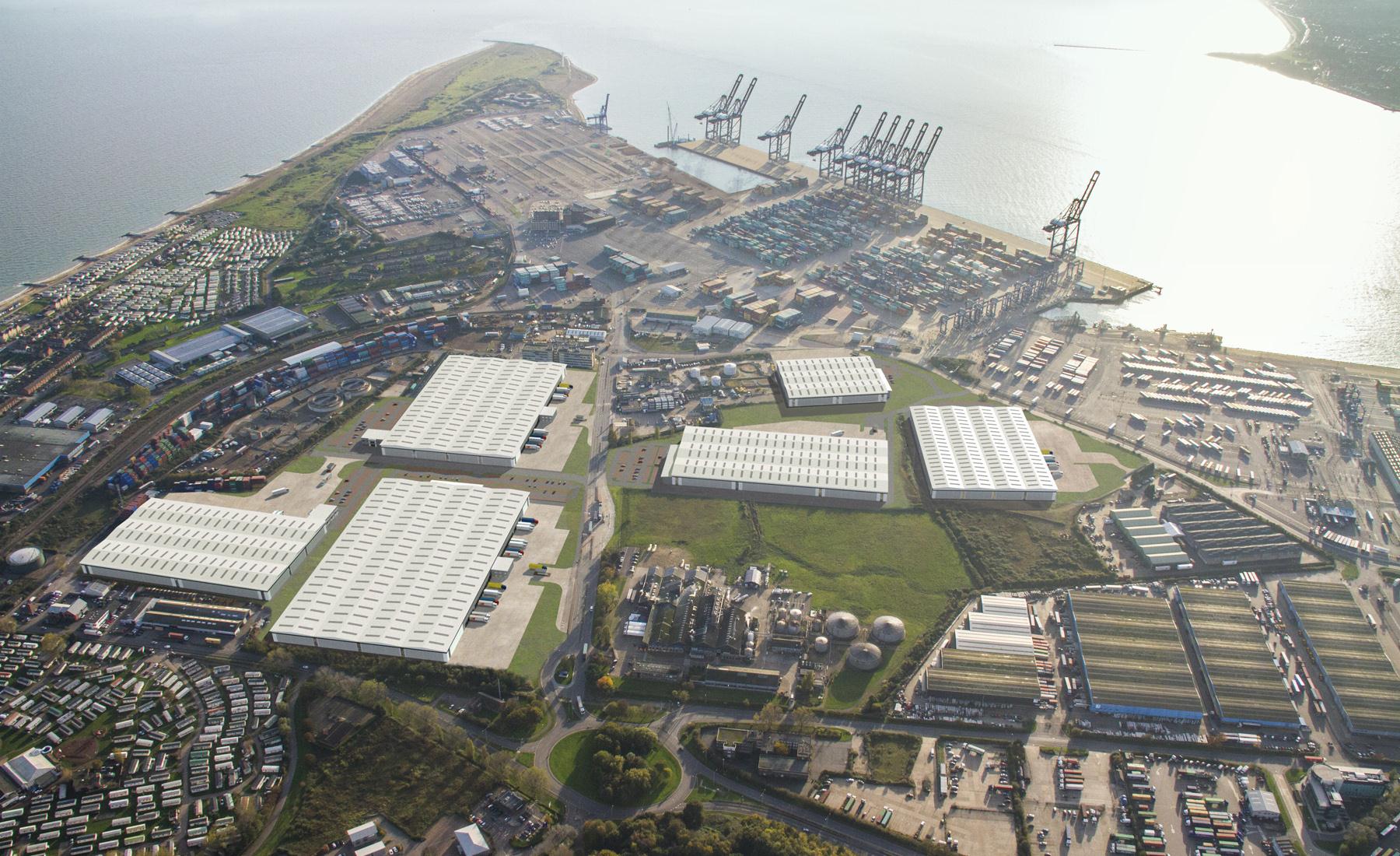Major European ports are seeking to counter continuing tough trading conditions by implementing an ever-wider range of logistics-related marketing initiatives designed to help secure Asian and other deep sea container traffic flows.
With now often only limited scope to significantly improve their competitiveness in those trades through further reductions in tariffs or improvements to dock-side handling productivity, many are stepping up the development of new logistics options aimed at boosting their national or regional trade gateway credentials.
Meanwhile, others are increasing their focus on improving general business ties with Asian countries in the hope that will ultimately generate additional Asia-Europe freight traffic for their terminals.
Two of the most recent examples of actual new major port logistics facility developments relevant to Asia-Europe container trades both took place in the UK.
 In December 2015, the English east coast gateway of Felixstowe, the UK’s largest container port, announced it had secured planning permission for the first phase of a 130,000-square-metre logistics park located within the port’s perimeter, adjacent to the terminal. That approval, it stated, covered the first four warehouses to be built as part of that scheme.
In December 2015, the English east coast gateway of Felixstowe, the UK’s largest container port, announced it had secured planning permission for the first phase of a 130,000-square-metre logistics park located within the port’s perimeter, adjacent to the terminal. That approval, it stated, covered the first four warehouses to be built as part of that scheme.
Earlier in 2015, a second southeast England port, London Gateway, officially opened a major new logistics facility next to its container terminal. Owned by DP World and operated by UK logistics provider Import Services Limited, the multi-user high-tech facility initially comprises 16,800 square metres of distribution and logistics space, plus 2,400 square metres of office accommodation, with the potential to be expanded to a total of 36,000 square metres.
London Gateway also reported at that time that work was well under way on a second major logistics centre in the port park, a 50/50 “speculative development” joint venture between DP World and Prologis, a leading global industrial real estate developer.
Elsewhere in Europe, the Spanish port of Barcelona last September announced the launch of a new initiative by Catalonia Trade and Investment, Barcelona China European Logistics Centre (Barceloc), designed to publicize the opportunities that city and the wider surrounding Catalonia region could offer to Chinese companies wishing to set up in Europe.
“Barceloc offers companies its knowhow, advising them on all the aspects they may need to develop a new business, such as choosing the best location, administrative and customs issues, familiarity with the offer of logistics and services, and connectivity to the various markets,” stated the Barcelona port authority.
China has also been a particular target for recent commercial initiatives by HAROPA, the joint venture organization for the French ports of Le Havre, Rouen and Paris. Late last year, for example, senior HAROPA executives met representatives from several Chinese companies in China in order to promote the transport and logistics offers available to and from the Seine corridor in northern France. They specifically highlighted the availability of local warehousing and other real estate suitable for large-scale logistics operations.
More generally, pointed out HAROPA, one of the main focuses of the Port of Le Havre’s 2014-2019 strategic plan was logistics. In that context, it added, the port had three logistics parks under development – PLPN1 (construction potential of 70,000 square metres of warehouse space); PLPN2 (committed protocols for the development of 168,000 square metres); and PLPN3 (potential to house around 175,000 square metres of warehouse space).
Elsewhere in northern Europe, the Belgian port of Antwerp last month announced the availability of what it claimed was a “unique” online platform to provide potential investors with a complete list of real estate locations on offer in the port area.
“Until recently, potential investors had to go on a long search using various channels, which was time-consuming to say the least. Now the new platform offers them a clear, complete overview of all commercial premises for rent or sale in the port area,” stated the Antwerp Port Authority.
Antwerp was also involved in one of the most recent new general business link-ups between a European port industry organization and an Asian party. Specifically, the port announced a stepping up of its established five-year collaboration with Guangzhou on shipping industry personnel training to now also include commercial matters, through a twinning agreement.
In that context, the Antwerp Port Authority noted: “Currently there are two shipping services between north-west Europe and China calling at Guangzhou and Antwerp. By developing a joint marketing approach, the respective port authorities aim to get both ports included in several more loops.”
Another recent new general European port/Asian organization business link development saw the German port city of Hamburg report a strengthening of its ties with Singapore through the appointment of an honorary ambassador, Ralf Schmidt, in that Southeast Asian gateway.
Announcing that development, HWF Hamburg Business Development Corporation pointed out that the economic relations between the two centres were “marked by the port industry.” Marketing body Port of Hamburg Marketing added that Singapore was the German port’s third most important trade partner in terms of seaborne container traffic.
Recent Asia-related business link developments by Europe’s largest port, Rotterdam in the Netherlands, have included entering into a “strategic alliance” with the Bank of China, one of that country’s top five state-owned banks. Through a memorandum of understanding signed late last year, the two parties “re-affirmed their intention to build a long-term alliance.”
Expanding on that point, the Port of Rotterdam Authority said the collaboration would allow the partners to support each other in identifying, attracting and developing business opportunities in, among other areas, logistics, containers, shipping and rail infrastructure. “Both parties intend to jointly attract new investments that will result in an increase in trade volumes and greater transparency in the various logistics chains,” it added.
By Phil Hastings
Europe Correspondent | London



